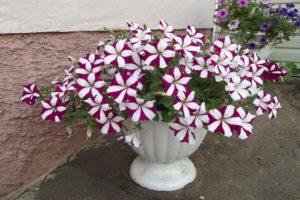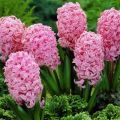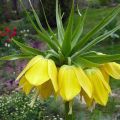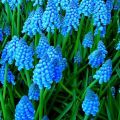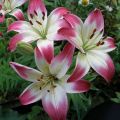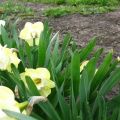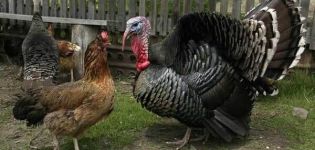Planting and caring for Pushkin in the open field, the best species and varieties
Representatives of the Hyacinth family look spectacular on garden and backyard plots. For those who love delicate and attractive primroses, it will be interesting to know how to properly plant Pushkinia and what care this flower, often called dwarf hyacinth, requires. This flower was first discovered by the famous Russian chemist, botanist and mineralogist Apollos Apollosovich Musin-Pushkin.
Description and features
Pushkinia is a very beautiful small flower belonging to the subfamily Hyacinths and the family of Asparagus plants. According to some sources, she is also included in the Liliaceae family.
In the wild, Pushkinia mainly grows in the Caucasus, Asia Minor and Western Asia. The most favorable for it are stony, humid slopes, as well as mountain meadows with an abundance of shrubs.
The average height of this primrose is 15-20 centimeters. This culture belongs to the category of ephemeroids - herbaceous perennial plants with a short growing season. The bulbs are ovoid; on top they are covered with thin brown scales. At the base of the stem there are 2 or 3 dark green belt-shaped leaves. Bell-shaped flowers of white or pale blue color form racemose inflorescences. They appear several days after leaf formation. At the end of the flowering period, fruits are formed in the form of capsules filled with round light brown seeds.
The size of Pushkinia is miniature, but this early spring flower has pronounced decorative properties. The flowering period begins in April or May, depending on the region, and lasts up to three weeks.

Outdoor cultivation
To successfully grow Pushkinia, you need to choose the right place and prepare the nutrient soil.
Landing dates
Sowing seeds in open ground should be in the period from mid-September to the twenties of October. Thus, having passed the natural stratification procedure, they will sprout by next spring.
Selection and preparation of seed
Seeds or bulbs of the plant are used as seed.
Collect the seeds of Pushkinia for subsequent sowing in June, immediately after the end of the flowering period. Since the soil is too dry at this time, the sowing process itself must be postponed until autumn. Until this moment, it is necessary to protect the seeds from drying out by placing them in the refrigerator for storage.
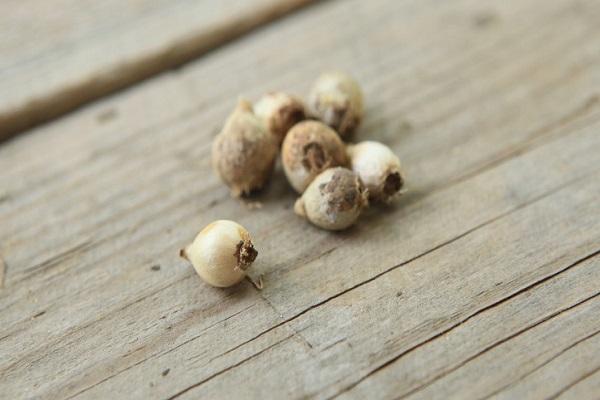
The bulbs must be dug up in the fall, when the leaves of the plant turn yellow and begin to dry. Carefully separate the daughter bulbs from the mother ones and dry in a shaded and ventilated place. Until the very moment of planting, they should be stored in a box made of cardboard or wood. At its bottom, you must first lay a nutrient layer of slightly moistened sawdust or peat.
Soil preparation
The soil for sowing a plant must be well-drained, that is, free of excess water. If the soil has too dense structure, it is necessary to loosen it by mixing with leaf humus, peat or river sand. The site for planting the plant should be sufficiently illuminated by the sun, but light shade is allowed. Stagnant moisture must be avoided.
Landing scheme
Seeds should be sown to a depth of at least 5 centimeters, and bulbs should be planted to a depth of 7 centimeters. A distance of up to 10 centimeters must be observed between them - this will allow the flowers to develop comfortably without hindering each other.
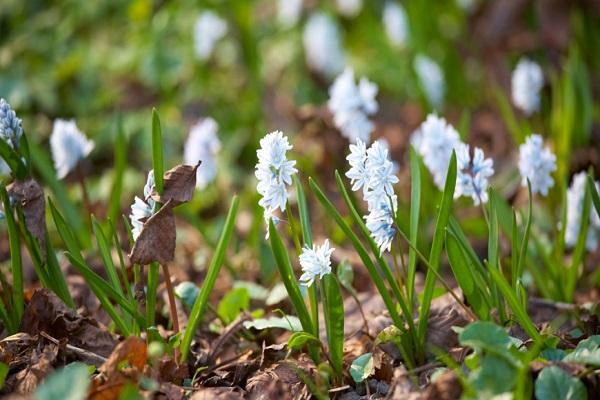
Care
Proper watering and feeding of Pushkinia, as well as the fight against pests and diseases, will provide the plant with healthy development and an attractive appearance.
Watering
If dry weather prevails in spring, Pushkinia requires intensive watering. This plant especially needs life-giving moisture during the growth of leaves and peduncles.
Loosening and weeding
It is necessary to loosen and weed the soil after the pushkinia has faded. It is necessary to remove in time all weeds that drown the growth of a miniature flower.
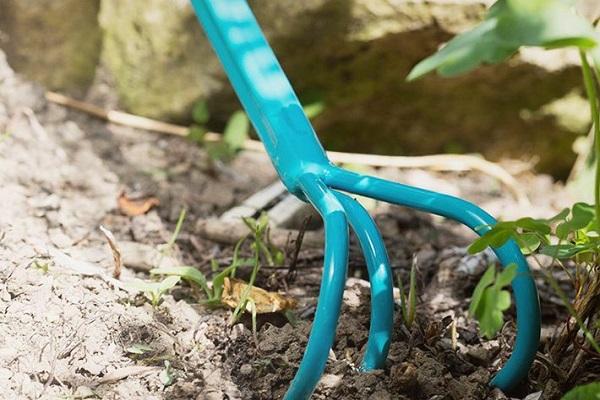
Mulching
By mulching the soil where Pushkinia grows, you can reduce the amount of watering and weeding.
It is recommended to use peat as mulch. This procedure is carried out immediately after planting the flower.
Top dressing
At the beginning of spring, Pushkinia is especially in need of nutrients, so you need to feed it with dry mineral fertilizer. For one square meter of the site, 50-60 grams of the product will be required - scatter its granules evenly around each flower and leave until completely dissolved. Then, in order for the valuable substances to reach the roots, loosen the soil between the rows.
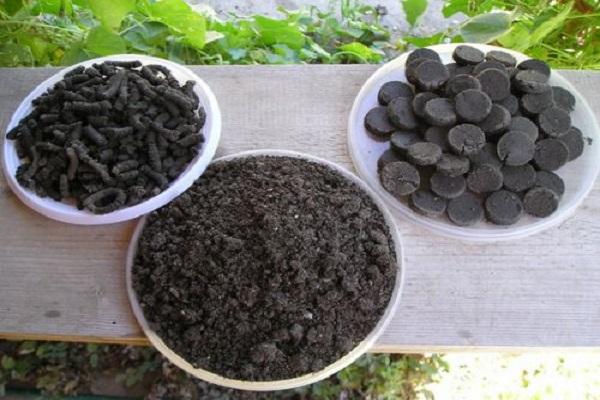
Diseases and pests
Pushkinia is relatively resistant to pests and diseases, but in some cases it is affected by rodents, gray rot, and achelenchoides. There is a solution and preventive methods for every problem.
Gray rot
Gray mold, also known as botrytis, is a dangerous and rapidly spreading fungal disease. Its first symptom is the appearance of gray spots on any ground part of the plant. As an emergency, treat the infected plant with a fungicidal solution.
Recommended for these purposes:
- bordeaux liquid;
- "Topaz";
- Previkur;
- "Kuproksat";
- "Speed".
For prevention, you need to ensure that when watering does not get water on the leaves of the plant, and also avoid excess nitrogen-based fertilizers.
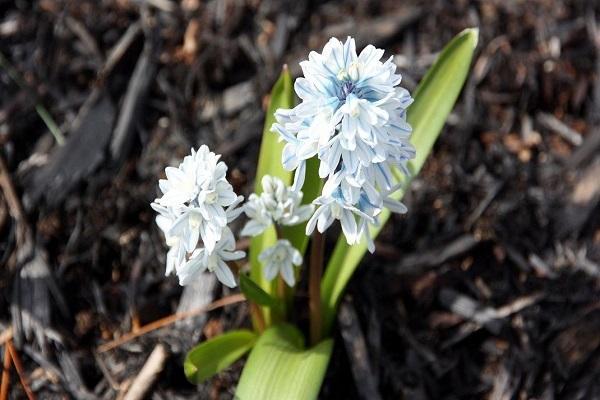
Achelenhoides
Achelenchoides is a disease that manifests itself in ring rot and the appearance of a brown tint on the scales of the bulbs. The affected plant slows down natural growth and loses its visual appeal. The solution to the problem will be the complete destruction of diseased bulbs.
To prevent infection with achelenchoides, you need to keep the bulbs in warm water with a temperature of +43 degrees for 15 minutes before planting.
Rodents
Mice and other rodent species love to feed on succulent Pushkinia bulbs.Therefore, you need to take care of reliable traps in advance.
Another enemy of this flower is the meadow mite. He gnaws the bottom and moves the middle of the bulb, as a result of which it begins to rot or dry out. Treatment of the plant with an insecticidal preparation will help to get rid of the problem. For preventive purposes, such treatment must be carried out before planting.
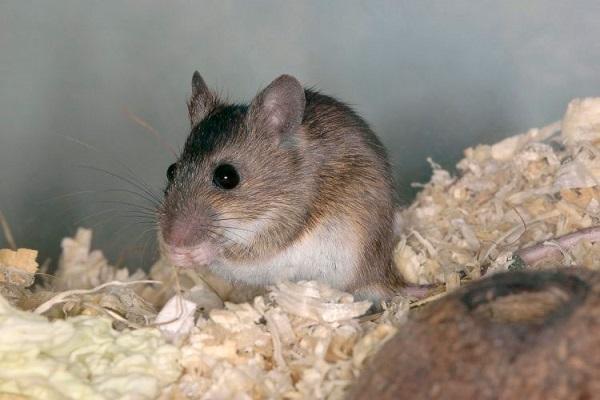
Transfer
Periodically, Pushkin needs a transplant. It is advisable to carry it out every 4-5 years. During this period, each bulb has 5-7 daughter processes. Plants become cramped on the site, as a result of which their aesthetic appearance deteriorates.
After flowering
The bulbs for transplanting must be dug up in the middle of summer, when the above-ground part of the plant dries up significantly. The planting material must be carefully sorted out, getting rid of rotten or damaged specimens. Transfer healthy bulbs to a cardboard box and place in a cool, ventilated place. Landing in the ground should be done as usual, in mid-September or October.
Collection and storage of seeds
The best time to collect Pushkinia seeds is June. They need to be dried and poured into a cardboard box. It is recommended to store in the vegetable compartment of the refrigerator, where optimal temperature conditions are provided.
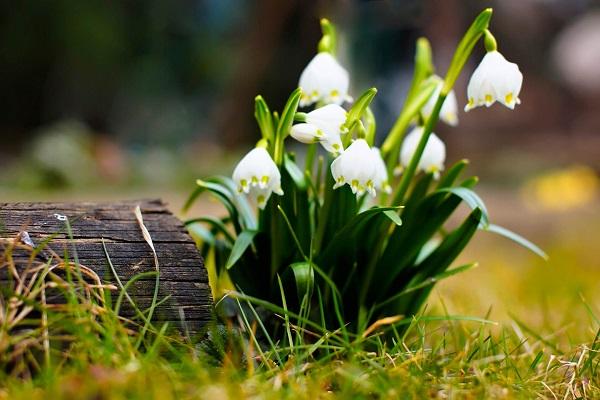
Preparing for winter
It is recommended to cover the soil where Pushkinia was transplanted with a layer of straw or peat before wintering.
Distillation at home
Forcing accelerates the growing process of Pushkinia by changing light, humidity, temperature and other factors that positively affect its growth and flowering.
For distillation at home, you must:
- Select several healthy Pushkinia bulbs.
- Prepare a pot up to 7 cm high and 12-15 cm in diameter.
- Fill the pot with nutritious soil consisting of leaf humus, river sand and turf soil in a ratio of 1: 1: 2.
- Plant the bulbs.
- Hide the container in a dark, cool place with a temperature not higher than +10 degrees and a humidity of 85-90%.
- After 8-10 weeks, move the container to a lighted room with an air temperature not exceeding +15 degrees.
- Water as needed.
- After 2 weeks, the flowering period will begin.
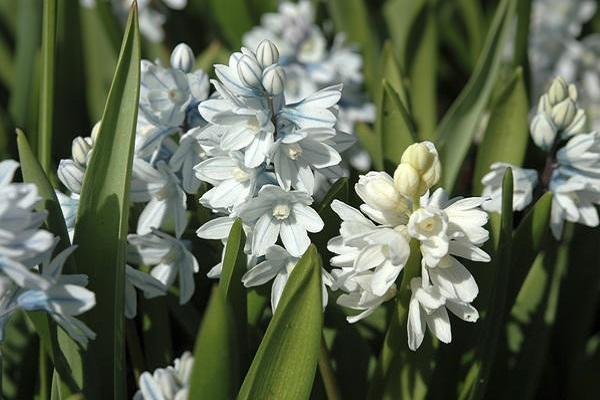
Kinds
There are several varieties of pushkinia.
Hyacinth
Hyacinth Pushkinia in wildlife is mainly found in the mountains of Eastern Transcaucasia and Northern Iran. This is a miniature plant with rather fleshy plump leaves. Oval inflorescences have a dense structure and pale blue, as close as possible to white, color.
Scaly
This type of Pushkin is common in the Caucasus, Turkey and Iran. Prefers to grow on forest edges and meadows among shrubs. The bell-shaped flowers have a pleasant blue hue.
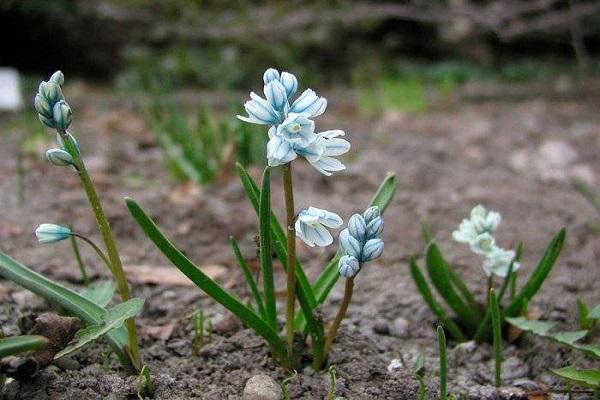
Lebanese
One of the subspecies of the plant variety is called Lebanese Pushkin. The main difference is that it has larger flowers with a two-toothed crown.
Bilgineri
Pushkinia Bilgineri was discovered in 2014 by the Turkish botanist Hasan Yaldirim. It is characterized by an almost white color and a refined shape of the petals.
Pishman
Pishmen's Pushkinia from other species is distinguished by the yellow-green color of the perianth. This plant is widespread in Iran and Turkey.
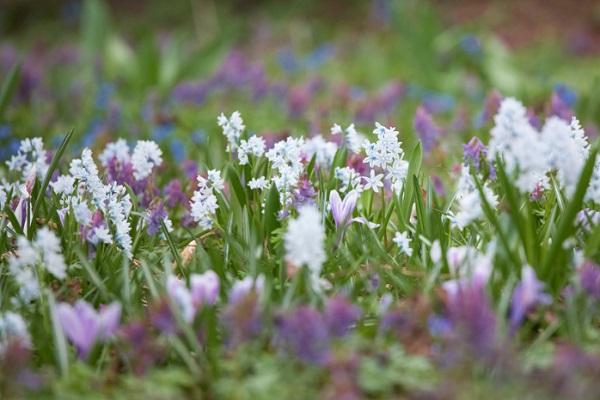
Popular varieties
Among a large number of varieties, the following are popular.
Alba
One of the rare varieties of Lebanese Pushkin is called Alba. Its distinctive features are its snow-white color and the presence of an expressive blue line on the vein of the petal. The inflorescences are oval, and the leaves are thin, linear.
Libanotics
Another subspecies of Lebanese Pushkin is Libanotika. This plant attracts attention with large flowers of a beautiful blue hue.
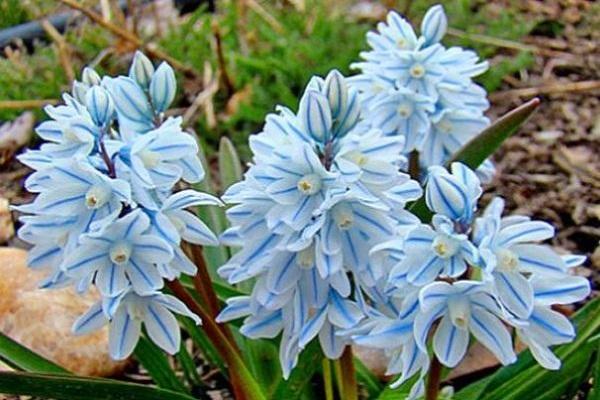
Reproduction
For reproduction, seeds or daughter bulbs of the plant are used.
Seeds
Seeds for propagation of Pushkinia are harvested at the end of the flowering period. They must be dried in the fresh air and stored until autumn in a cool, dark place. Planting into the ground is carried out at a depth of at least 5 cm, at a similar distance from each other, so that the plants can grow and develop freely.
Bulbs
The bulbs are harvested from Pushkinia, which has reached the 4-5th anniversary. This is done after flowering, usually in the middle of summer. For planting, beautiful, healthy specimens are selected without damage or signs of disease. All material must be dried and stored in a cool and dark place.
Pushkinia bulbs are planted to a depth of 7 cm.The distance between the holes is 10 cm.
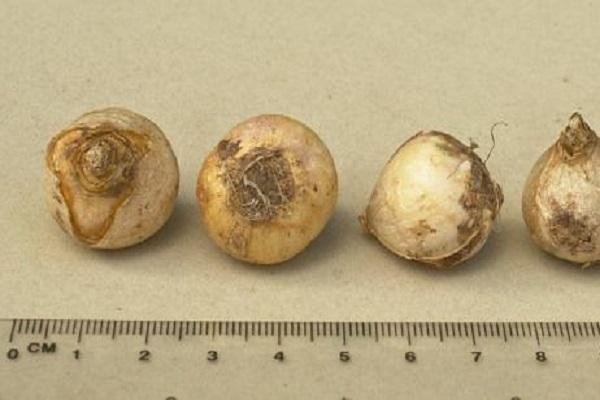
Partners
The best partners of Pushkinia in the garden area are such plants as:
- tulips;
- undersized daffodils;
- primrose;
- chionodox;
- woodlands;
- muscari;
- tenacious;
- stonecrop.
Use in landscape design
Pushkinia is an irreplaceable element that looks harmoniously in alpine slides, flower beds, mixborders and borders. In spring, delicate blue flowers attract attention, giving a feeling of lightness and freshness. In summer, the emphasis is on the luscious dark green leaves of Pushkinia.
